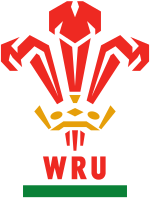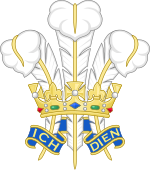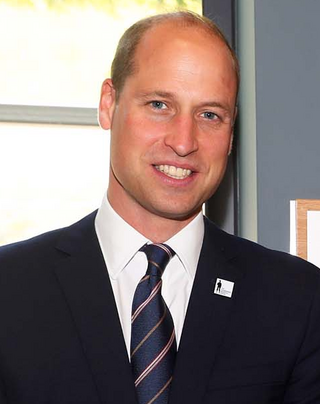
Prince of Wales is a title traditionally given to the male heir apparent to the English and, later, British thrones. The title originated with the Welsh rulers of Gwynedd who, from the late 12th century, used it to assert their supremacy over the other Welsh rulers. However, to mark the finalisation of his conquest of Wales, in 1301, Edward I of England, invested his son Edward of Caernarfon with the title, thereby beginning the tradition of giving the title to the heir apparent when he was the monarch's son or grandson. The title was later claimed by the leader of a Welsh rebellion, Owain Glyndŵr, from 1400 until 1415.

The culture of Wales is distinct, with its own language, customs, politics, festivals, music and Art. Wales is primarily represented by the symbol of the red Welsh Dragon, but other national emblems include the leek and the daffodil.
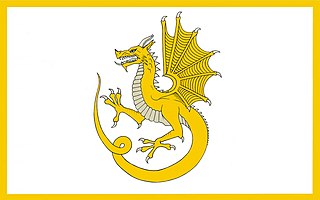
The wyvern is a type of dragon with two legs, two wings, and often a pointed tail which is said to be a venomous stinger.

The flag of Wales consists of a red dragon passant on a green and white field. As with many heraldic charges, the exact representation of the dragon is not standardised and many renderings exist. It is not represented in the Union Flag.
The Welsh Rugby Union is the governing body of rugby union in the country of Wales, recognised by the sport's international governing body, World Rugby.

Rugby union in Wales is considered a large part of Welsh national culture. Rugby union is thought to have reached Wales in the 1850s, with the national body, the Welsh Rugby Union (WRU) being formed in 1881. Wales are considered to be one of the most successful national sides in Rugby Union, having won the most Six Nations Championships, as well as having reached 3 World Cup semi finals in 1987, 2011 and 2019, having finished 3rd in the inaugural competition and having finished 4th in 2011 in a repeat of the first third place play-off. The Welsh team of the 1970s is considered to be arguably the greatest national team of all time, prompting many experts in the game to suggest that had the Rugby World Cup existed during this period, Wales would be amongst the list of World Cup winners. As of November 2021, they are ranked 8th in the world.
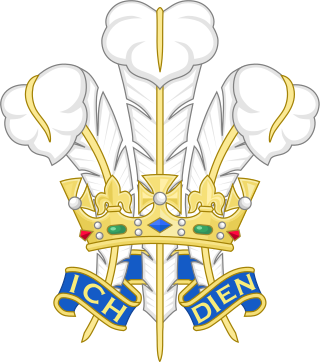
The Prince of Wales's feathers is the dexter heraldic badge of the Prince of Wales. It consists of three white ostrich feathers encircled by a gold coronet. A ribbon below the coronet bears the German motto Ich dien. As well as being used in royal heraldry, the badge is sometimes used to symbolise Wales, particularly in Welsh rugby union and Welsh regiments of the British Army.

The Welsh Dragon is a heraldic symbol that represents Wales and appears on the national flag of Wales.

The Welsh are an ethnic group native to Wales. "Welsh people" applies to those who were born in Wales and to those who have Welsh ancestry, perceiving themselves or being perceived as sharing a cultural heritage and shared ancestral origins.

A Royal Badge for Wales was approved in May 2008. It is based on the arms borne by the thirteenth-century Welsh prince Llywelyn the Great, with the addition of St Edward's Crown atop a continuous scroll which, together with a wreath consisting of the plant emblems of the four countries of the United Kingdom, surrounds the shield. The motto which appears on the scroll, PLEIDIOL WYF I'M GWLAD, is taken from the National Anthem of Wales and is also found on the Welsh designs for £1 coins minted from 1985 until 2000. The badge formerly appeared on the covers of Assembly Measures; since the 2011 referendum, it now appears on the cover of Acts passed by the Senedd and its escutcheon, ribbon and motto are depicted on the Welsh Seal.

The Wales national women's football team represents Wales in international football. It is controlled by the Football Association of Wales (FAW), the governing body for football in Wales and the third-oldest national football association in the world, founded in 1876.
Heraldry in Wales has a tradition distinct from that of English and Scottish heraldry. There is evidence that heraldry was already being used in Wales by the middle of the thirteenth century; for instance, in Gwynedd, two sons of Llywelyn the Great are recorded as having borne coats of arms in this period. Following the integration of Wales into England in the fourteenth and fifteenth centuries, the Welsh heraldic tradition became merged into that of England.
Penclawdd RFC is a Rugby Football Club representing the town of Penclawdd, Swansea, Wales, UK. The club is a member of the Welsh Rugby Union and is a feeder club for the Ospreys. Players from the club are nicknamed the Donks.
Morriston Rugby Football Club is a rugby union team from the village of Morriston, Swansea in West Wales. The club is a member of the Welsh Rugby Union and is a feeder club for the Ospreys.

RGC 1404, formerly "Gogledd Cymru", is a rugby union team founded in 2008 and based in Colwyn Bay, Conwy. They currently play in the Welsh Premier Division; after winning Division 1 East at the first attempt in 2012–13, they spent three seasons in the Welsh Championship before earning promotion to the Premier Division in 2015–16. They finished fourth in their first season in the top flight, but also won the WRU Challenge Cup for the first time. They play at Eirias Stadium, which has a capacity of just over 6,000.

The national symbols of Wales include various official and unofficial images and other symbols.

The bat is a heraldic symbol sometimes used as a charge, but most prominently used as a crest on or around the crown in municipal arms of the former Crown of Aragon—specifically in Valencia, Catalonia and the Balearic Islands.

The North Wales Crusaders is a professional rugby league club based in Colwyn Bay, Wales. They are the successors to the former Super League club Crusaders Rugby League. Crusaders compete in Betfred League 1, the third tier of European rugby league. Until the end of 2016 they played their home games at the Racecourse Ground in Wrexham. From 2017 to 2020 they were based at the Queensway Stadium in Wrexham, but also played several games at Hare Lane in Chester. In 2021 the club moved to the Eirias Stadium in Colwyn Bay.

The coat of arms of the Prince of Wales is the official personal heraldic insignia of the Princes of Wales, a title traditionally granted to the heir apparent of the reigning monarch of the United Kingdom of Great Britain and Northern Ireland, formerly the Kingdom of Great Britain and before that the Kingdom of England.
